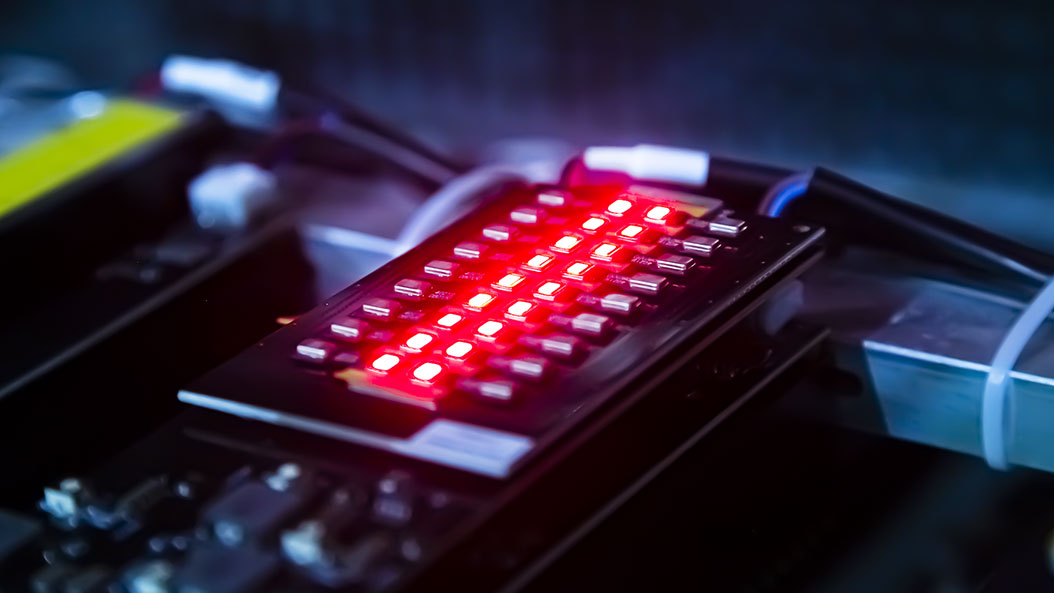Display Maker Boasts Record-Breaking One Million Nits Red MicroLEDs

Jade Bird Display (JBD) has announced that it has developed a red MicroLED that can deliver in excess of 1,000,000 nits of brightness. The firm says its achievement is record-breaking, and will be important to the development of full-color AR, smart glasses, and micro projector device development.
Until this point in time, red MicroLEDs had been the ‘weak link’ in JBD’s Hummingbird full-color light engine devices for AR solutions. It achieved a red MicroLED brightness of 300,000 nits in 2021, over 500,000 nits in 2022, and in Feb 2023 reached 750,000 nits. Now capable of 1,000,000 nits, the red MicroLED brightness is equal to the best blue MicroLEDs, but still below green MicroLED brightness with 5,000,000 nits. Nevertheless, the new red MicroLEDs enable the tiny 0.4cc and 1 gram JBD Hummingbird projector to output up to 5 lumens while consuming just 200 mW. Used with optical waveguide lenses, this 640 x 480 pixel projected color display can achieve an eye-level brightness in excess of 1,000 nits.

In its press release, JBD says that (low) red MicroLED light brightness had been “the most difficult challenge facing the MicroLED industry.” The firm pats itself on the back for passing the 1M nits milestone and provides some insight into how it has managed this feat.
According to the Chinese MicroLED maker, a decision to use and persist with aluminum gallium indium phosphide (AlGaInP) technology for its red MicroLEDs has paid off. “AlGaInP is the key to achieving high-performance red light,” says JBD. “It has a bandgap that best matches red light and is the most mature semiconductor material used in the industry for making red LEDs.” Additionally, JBD’s work on multiple supporting technologies like crystal epitaxy and chip passivation is claimed to have been instrumental in the advance in brightness levels delivered.
Importantly, these brightness gains for red MicroLEDs have been achieved using “normal power consumption,” according to JBD. No extra power or overdrive mode is required, keeping energy consumption low and portable-friendly.

JDB’s brighter red MicroLEDs being used in AR smart glasses and micro-projectors might not be that exciting in isolation, but the underlying red MicroLED technology improvements could help improve TVs and computer monitors too.
The MicroLED market is indeed set to boom in the coming years. We are already seeing the display tech adopted by laptop makers, for example, and analysts estimate the market CAGR will be over 26% to 2031.
Get Tom's Hardware's best news and in-depth reviews, straight to your inbox.

Mark Tyson is a news editor at Tom's Hardware. He enjoys covering the full breadth of PC tech; from business and semiconductor design to products approaching the edge of reason.
-
watzupken AR glass + 1 million nits is a quick way to make yourself go blind. In real life, you can either look away from the source of light or shield your eyes from the source of light. But on an AR glasses, you can't really do that.Reply -
purposelycryptic Replywatzupken said:AR glass + 1 million nits is a quick way to make yourself go blind. In real life, you can either look away from the source of light or shield your eyes from the source of light. But on an AR glasses, you can't really do that.Nevertheless, the new red MicroLEDs enable the tiny 0.4cc and 1 gram JBD Hummingbird projector to output up to 5 lumens while consuming just 200 mW. Used with optical waveguide lenses, this 640 x 480 pixel projected color display can achieve an eye-level brightness in excess of 1,000 nits.
The light is diffused - slightly over 1,000 nits is what the projector maxed out at actually projecting to the eye, and that includes using the 5 million nit green microLEDs.
That's still bright - but my TV can put out more without me going blind, even when I stick my face right up to it. Not that I'd recommend that, it's still damned bright, especially in a darkened room, but a whole different level from 1 million nits.
You have to remember these LEDs are really, really tiny. Those 1 million nits get diffused across an area at least 1,000 times its size, probably a good bit more.
If they were actually making an array of tightly packed microLEDs squished up against each other, or even close enough as would be required to bring the resolution to 4K, rather than VGA, yes, at maximum brightness, it would probably melt your eyeballs. Probably also the microLEDs, too, though. They're efficient, but not yet that efficient. -
Order 66 I don't know why you would need an LED that is brighter than the sun (it's a joke, I have no idea how bright the sun actually is.) other than to melt your eyes.Reply